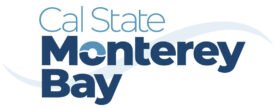For the last week or so, I’ve worked on a comprehensive writing assignment for my CST 300 Writing Lab class: an Industry Analysis Paper. For this assignment, I’ve written about a topic that really sparks my interest—Human-Computer Interaction (HCI) and the changing landscape of app and site building. The objective of the paper is to delve deep into the industry I hope to enter following graduation. As I’m hoping to have a career in software development—namely working in tools such as React Native, Flutter, and WordPress—I saw this as a perfect chance to not only conduct research, but also think about in which direction I’m currently headed as a professional.
What I’ve learned to date is that HCI encompasses a lot more than getting things to “look good” on a computer. It’s an intersection of computer science, design, psychology, and more. It’s also highly dynamic, with the likes of Google and Meta pushing the boundaries of user experience using open-source tools like Flutter and React Native. In the company analysis section of the paper, I examined the creators and communities revolving around these platforms:
-Meta developed React Native. It allows developers to create mobile apps with JavaScript and React.
-Flutter, which was developed by Google, enables gorgeous, high-performing apps using a single codebase in Dart.
-WordPress remains to lead site building due to its open-source nature and user-friendly interface that is managed by Automattic.
One of the harder sections of the paper was not only to summarize technical aspects but also to take into consideration industry trends—such as the trend towards cross-platform development, low-code solutions, and headless CMS structures. The second section of the paper involved mapping out my own academic and career objectives. I specified the courses I am going to study, the skills I am developing, and how I am working outside of the classroom through internships, networking opportunities, and independent projects.
